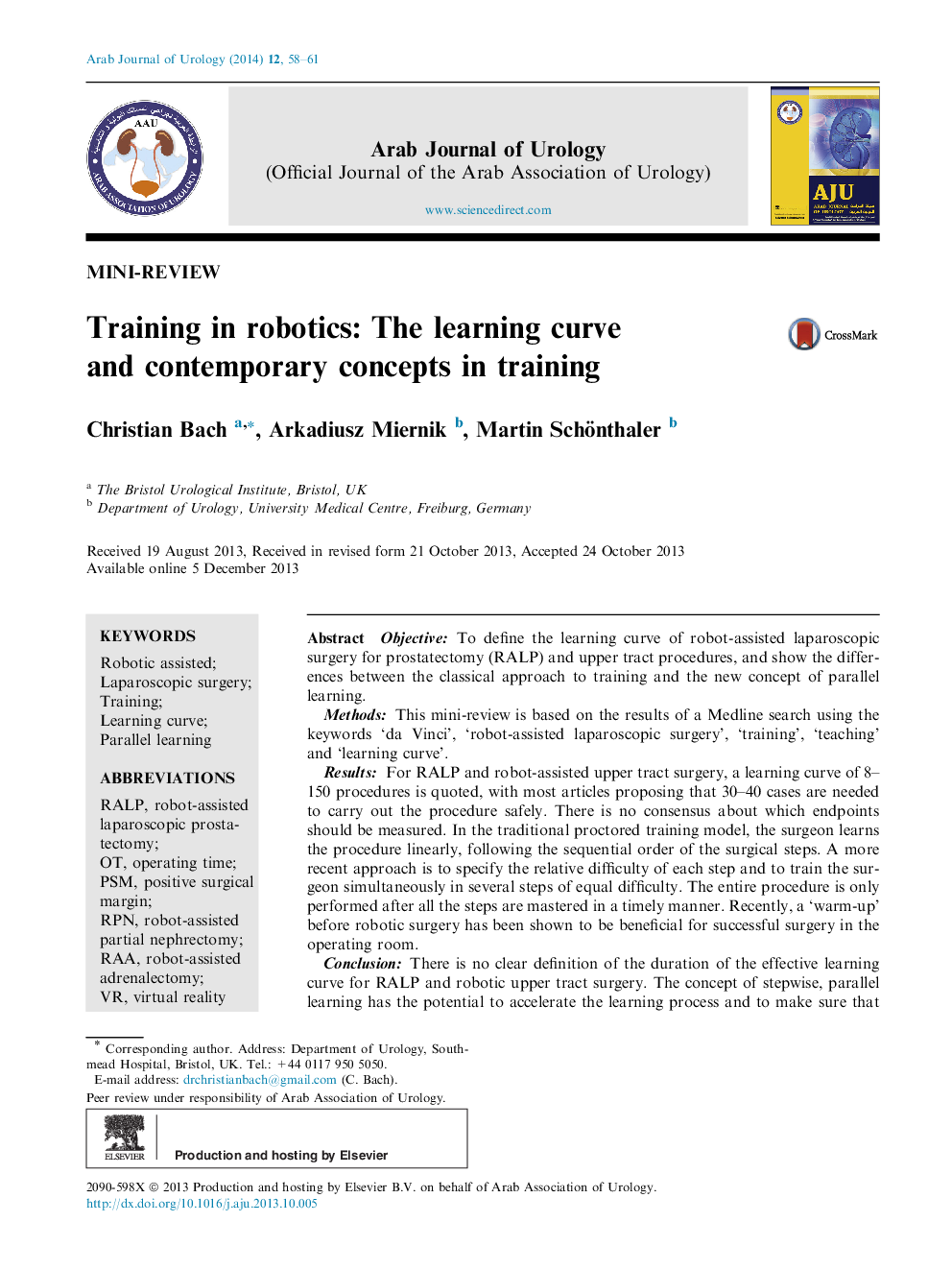| کد مقاله | کد نشریه | سال انتشار | مقاله انگلیسی | نسخه تمام متن |
|---|---|---|---|---|
| 4267983 | 1610739 | 2014 | 4 صفحه PDF | دانلود رایگان |
ObjectiveTo define the learning curve of robot-assisted laparoscopic surgery for prostatectomy (RALP) and upper tract procedures, and show the differences between the classical approach to training and the new concept of parallel learning.MethodsThis mini-review is based on the results of a Medline search using the keywords ‘da Vinci’, ‘robot-assisted laparoscopic surgery’, ‘training’, ‘teaching’ and ‘learning curve’.ResultsFor RALP and robot-assisted upper tract surgery, a learning curve of 8–150 procedures is quoted, with most articles proposing that 30–40 cases are needed to carry out the procedure safely. There is no consensus about which endpoints should be measured. In the traditional proctored training model, the surgeon learns the procedure linearly, following the sequential order of the surgical steps. A more recent approach is to specify the relative difficulty of each step and to train the surgeon simultaneously in several steps of equal difficulty. The entire procedure is only performed after all the steps are mastered in a timely manner. Recently, a ‘warm-up’ before robotic surgery has been shown to be beneficial for successful surgery in the operating room.ConclusionThere is no clear definition of the duration of the effective learning curve for RALP and robotic upper tract surgery. The concept of stepwise, parallel learning has the potential to accelerate the learning process and to make sure that initial cases are not too long. It can also be assumed that a preoperative ‘warm up’ could help significantly to improve the progress of the trainee.
Journal: Arab Journal of Urology - Volume 12, Issue 1, March 2014, Pages 58–61
